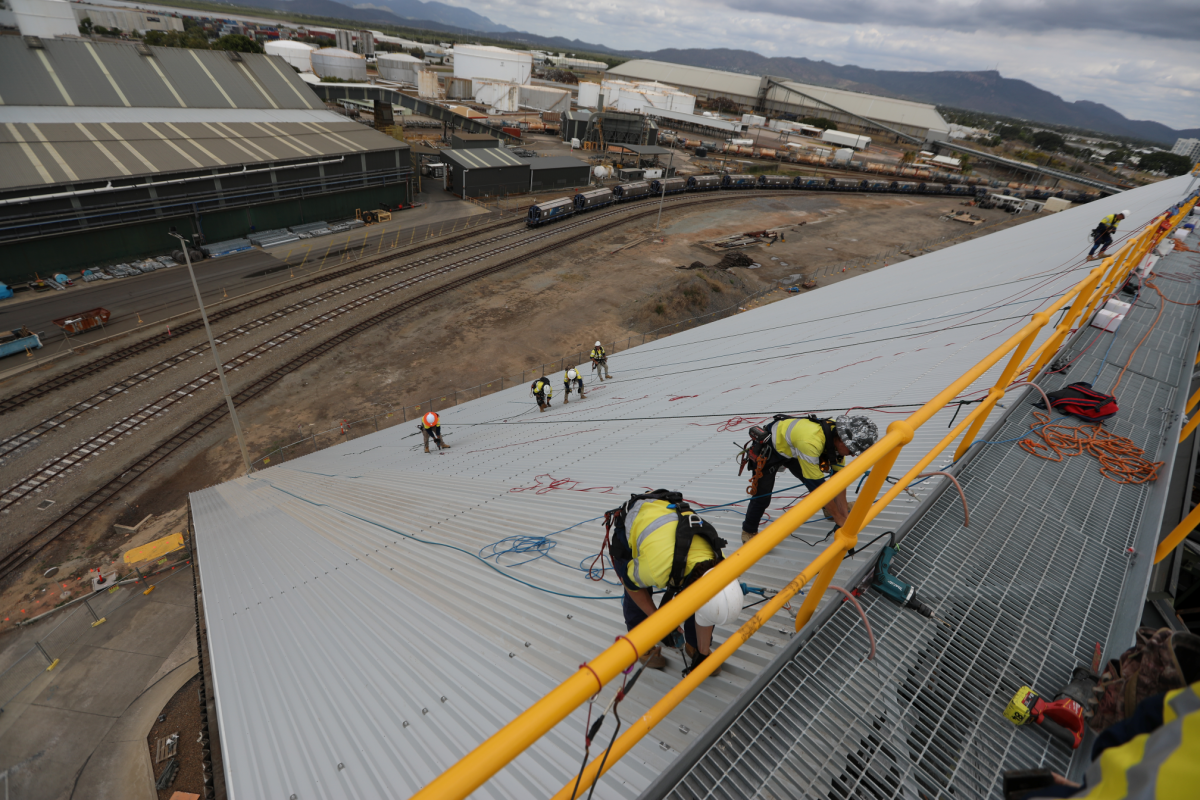Designing and building water treatment and storage facilities require careful consideration of corrosive elements to ensure the reliability, safety, and longevity of these critical infrastructures. Water treatment facilities are exposed to various corrosive agents, including chemicals, moisture, and microorganisms, which can accelerate the deterioration of conventional building materials. To address this challenge, PERMALITE® cladding and structural products shaped from marine grade aluminium have emerged as a superior choice due to their exceptional corrosion resistance, durability, lightweight properties, and sustainability.
Corrosive elements in water treatment and storage facilities
When designing and building water treatment and storage plants, several corrosive elements need to be considered. These elements can lead to corrosion and deterioration of various materials if proper precautions are not taken. Here are some of the key corrosive elements to consider:
- Water Composition
The composition of water being treated or stored can vary significantly depending on its source and treatment processes. Water containing high levels of dissolved salts, minerals, or corrosive chemicals can accelerate the corrosion of materials. Parameters such as pH, alkalinity, hardness, and chloride content should be analysed to assess the corrosive potential of the water. - Chemical Exposure
Water treatment facilities often utilise various chemicals, including chlorine and chloramines to purify and disinfect water. While they are effective in killing bacteria and controlling microbial growth, these chemicals can be corrosive in nature and pose a risk to traditional building materials. Exposure to chemicals can lead to the degradation of structures and equipment, compromising their efficiency and safety. - Moisture and Humidity
Water treatment facilities operate in a highly humid environment due to the presence of water and steam. The continuous exposure to moisture can promote corrosion on metal surfaces and compromise the structural integrity of buildings and equipment. - Microbial Activity
Microorganisms present in water can lead to microbiologically influenced corrosion (MIC). MIC can rapidly deteriorate metals in water treatment facilities leading to product failure failures and reduced service life. - The PERMALITE® advantage
The benefits of PERMALITE® cladding, rainwater and structural products for water treatment and storage facilities include: - Corrosion Resistance
PERMALITE® products are manufactured from marine grade aluminium alloys, such as 5052 and 5251, specifically engineered to withstand corrosive environments, including those found in water treatment facilities. These alloys contain higher levels of corrosion-resistant elements like chromium and magnesium, forming a protective oxide layer on the aluminium surface. This barrier prevents chemicals, moisture, and microorganisms from directly contacting the metal, ensuring superior corrosion resistance and prolonging the service life of the PERMALITE® cladding, rainwater and structural products. - Durability and Longevity
PERMALITE® aluminium products exhibit exceptional durability and can withstand the harsh conditions in water treatment and storage facilities. Their corrosion resistance and ability to resist chemical and microbial attacks make then an ideal choice for long-term performance. Unlike some materials that require periodic painting or protective coatings, PERMALITE® aluminium maintains its integrity and appearance with minimal maintenance, resulting in R&M cost savings and increased operational efficiency. - Lightweight Properties
PERMALITE® aluminium is significantly lighter than alternate building materials like steel and concrete. This lightweight characteristic simplifies transportation, handling, and installation processes, potentially resulting in cost savings during construction. - Structural Integrity
Water treatment facilities require robust and reliable structures to ensure the safety of workers and the public. PERMALITE® aluminium provides excellent structural integrity, even in challenging environments. Its high strength-to-weight ratio ensures the stability of buildings and structures, while its resistance to corrosion and abrasion ensures the continuous performance of these critical facilities. - Eco-Friendly and Sustainable
PERMALITE® aluminium is an environmentally friendly material choice. It is highly recyclable, and opting for marine grade aluminium in building construction aligns with sustainable practices, contributing to reduced environmental impact and promoting a circular economy. - Design Versatility
PERMALITE® cladding is available in a range of both traditional and contemporary profiles, allowing architects and engineers to create innovative and attractive designs for water treatment and storage facilities.
Conclusion
Designing and constructing water treatment and storage facilities necessitates careful consideration of corrosive elements to ensure the reliability and safety of these vital infrastructures. Chemical exposure, moisture, microbial activity, and abrasion are some of the factors that can accelerate material degradation and compromise the efficiency of traditional building materials.
PERMALITE® aluminium cladding, rainwater and structural products present an ideal solution for water treatment and storage facilities. With exceptional corrosion resistance, durability, lightweight properties, and sustainability, marine grade aluminium ensures the structural integrity and longevity of these facilities. Their resistance to chemical exposure, moisture, and microbial activity make PERMALITE® products a superior choice for long-term and reliable cladding and structural solutions. Additionally, the recyclability of PERMALITE® aluminium aligns with sustainable building practices, promoting environmentally conscious approaches to construction in the water treatment industry.
By opting for PERMALITE® aluminium cladding, rainwater and structural products, engineers, architects, and developers can create robust, efficient, and hygienic water treatment and storage facilities that safeguard public health and meet the growing demand for sustainable infrastructure solutions.
